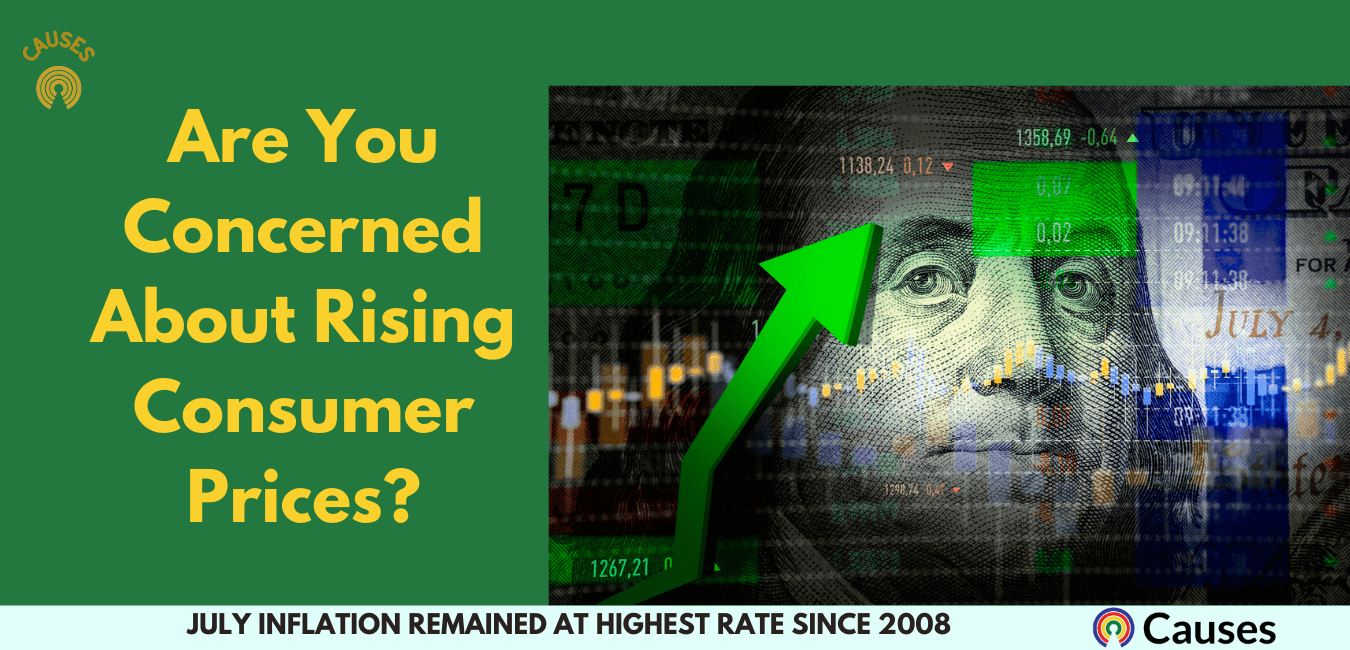
July inflation remained at highest rate since 2008 - how do you feel about rising prices?
How do you feel about the rise in consumer prices?
By Eric Revell, Countable News
What’s the story?
- The Bureau of Labor Statistics reported Wednesday that over the last 12 months the all items consumer price index rose by 5.4%, the same level as June, which means the last two months are tied for the largest 12-month inflation total since a 5.4% increase in the period ending in August 2008.
- Month-to-month consumer prices rose by 0.5% in July after increasing by 0.9% in June and 0.6% in May. June’s monthly price increases were the most since a 1% jump in June 2008.
- The report comes after Senate Democrats rejected an amendment offered by Sen. Mike Lee (R-UT) during the overnight vote-a-rama for Democrats’ $3.5 trillion spending plan that would’ve created a point of order against legislation causing a net increase in spending unless the Congressional Budget Office certifies that inflation is below 3%.
What goods did prices increase the most for?
- Here’s a rundown of the common items which have seen the largest increase in inflation year-over-year (notable monthly changes in parentheses):
- Gasoline prices (all kinds) increased 41.8% (including a 2.3% rise in July compared to June’s 2.6% increase).
- Used cars and trucks increased 41.7%.
- Fuel oil increased 39.1%.
- Lodging away from home increased 21.5%.
- Utility gas service (piped) increased 19%.
- Airline fares increased 19%.
- Bacon increased 11.1%.
- Beef steaks increased 10.7%.
- Fresh fish and seafood increased 8.5%.
- New vehicles increased 6.4%.
- Transportation services rose 6.4%.
- Milk increased 6.2%.
- Fresh fruits increased 5.2%.
- Electricity increased 4%.
What is inflation and how is it measured?
- Inflation is a measure of the decline of purchasing power for a given currency over time, which in the U.S. means that a dollar effectively buys less than it did in prior periods because prices rise.
- The most common way inflation is measured is through the Consumer Price Index for Urban Consumers (CPI-U), which shows changes in prices paid for a “representative basket of goods and services” by an urban consumer group representing about 93% of the U.S. population.
- CPI-U includes food, energy, commodities like cars and clothes, plus services such as rent and healthcare; and the relative importance of each to the overall basket shifts according to its proportion of all spending in a given month. This overall number is known as “headline” CPI, although economists also track a metric called “core” CPI which excludes food and energy because those categories tend to have more volatility.
- The Federal Reserve aims to keep inflation at about 2% as part of its dual mandate of promoting stable prices and full employment, as a modest amount of inflation is viewed as an optimum policy in terms of encouraging consumer spending without penalizing savings and investment. When inflation starts to get out of control, the Fed raises interest rates to encourage more savings and less consumer spending.
(Photo Credit: iStock.com / sefa ozel)
The Latest
-
 Voter Registration ResourcesNeed to register to vote? Or check to see if you're already registered? Maybe you just want election reminders or a mail-in read more...
Voter Registration ResourcesNeed to register to vote? Or check to see if you're already registered? Maybe you just want election reminders or a mail-in read more... -
 Pledge to vote. Make the commitment to yourself and your community.As citizens, voting is one of our most important privileges and responsibilities. But all too often we don't commit to voting. read more...
Pledge to vote. Make the commitment to yourself and your community.As citizens, voting is one of our most important privileges and responsibilities. But all too often we don't commit to voting. read more... -
 Take Action: Find a project for your favorite cause, or discover a new one, right here.Let's keep a good thing going and continue to serve side-by-side to strengthen communities throughout the year. 5 Reasons to read more...
Take Action: Find a project for your favorite cause, or discover a new one, right here.Let's keep a good thing going and continue to serve side-by-side to strengthen communities throughout the year. 5 Reasons to read more... -
 Power the Polls: Help staff your local polling placeby Countable Our democracy depends on ordinary people who make sure elections run smoothly and everyone’s vote is counted. This read more...
Power the Polls: Help staff your local polling placeby Countable Our democracy depends on ordinary people who make sure elections run smoothly and everyone’s vote is counted. This read more...